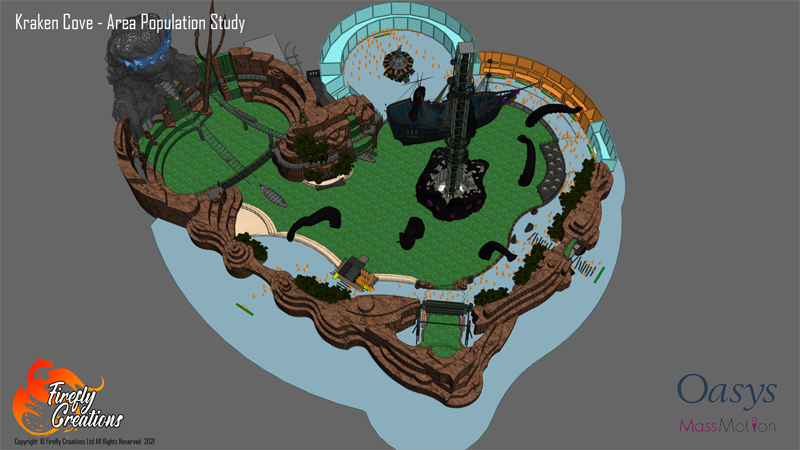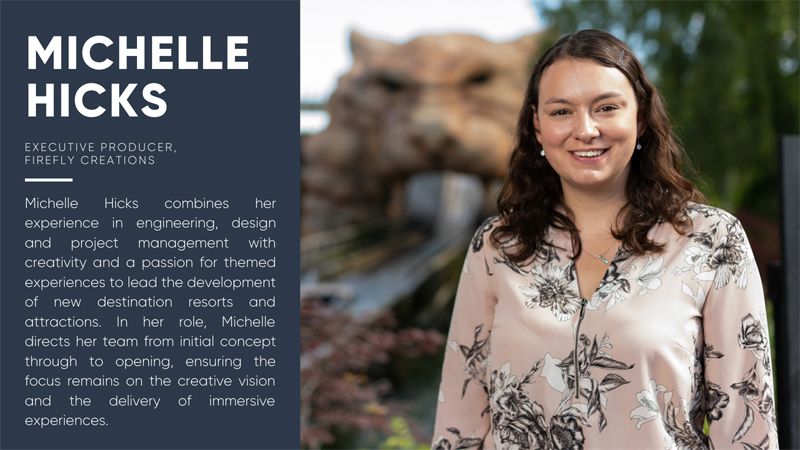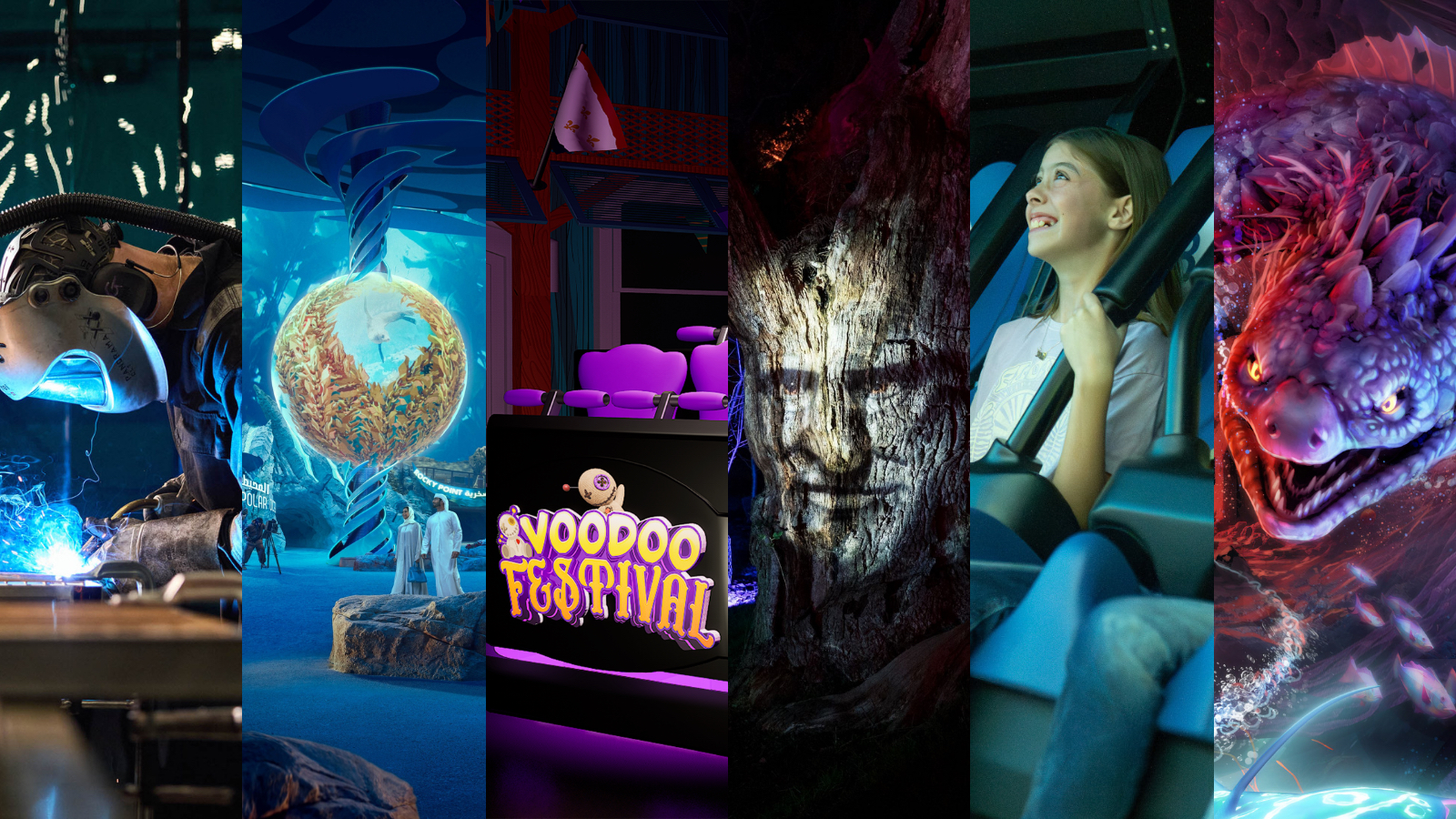|
The success of an immersive attraction can be determined by the flow of people entering and exiting the space. Michelle Hicks explains how effective operations can help to optimise these experiences

Michelle Hicks | Firefly Creations | 22 Feb 2021

 Long lines can turn a fun theme park experience into a nightmare for both customers and employees Credit: Canva Long lines can turn a fun theme park experience into a nightmare for both customers and employees Credit: Canva
Theme park attraction design is a wonderful world where we at Firefly Creations get to dream, imagine, create and design fully immersive experiences.
This can be anything - from the full master planning of lands through to detailed attraction design, from the tallest roller coaster to the creepiest dark ride.
While all of this wonderful creativity is key to the guest experience and success of the overall attraction, we have to give full consideration to the operational requirements during the design of an attraction as this can make or break an experience.
Avoiding frustration
Poor operations can lead to frustration for park guests and employees alike, cause unmanageable queues and impact the guest experience. To support operators in the management and planning of new theme parks and attractions, we use complex simulation tools to analyse guest behaviour, maximise throughput and review the impact of social distancing on park operations.
Crowd simulation software is crucial in the design of theme parks and attractions from an early stage. Kraken Cove (below) will act as a case study to demonstrate our approach to operational planning within a theme park land.
The attraction was designed by Firefly Creations as a fully immersive theme park land featuring three rides, including a launched drop tower, a cinematic water coaster and a theatrical top spin. The attraction also includes a variety of shops and dining locations, a hotel and midway games, all of which can be included within the simulation model to show how they affect the flow of guests around the land.

An overview of the 3D model of Kraken Cove used to simulate guest flow to inform design development and operational planning inside Oasys MassMotion - Credit: Firefly Creations
For every attraction, there is a tipping point beyond which the length of the queue outweighs the experience. Of course, this length will vary depending on the experience, but there is always a point at which the overall enjoyment of the experience will be impacted by the length of the queue line. As theme park designers, it’s our responsibility to design attractions that deliver the required throughput to avoid this situation and ensure all guests have a great experience.
Setting the operational standard
To ensure all guests can enjoy the experience as intended regardless of how busy the park is, operational requirements are at the front of our minds from the very start of a project.
When deciding on the type of attraction, hourly throughputs are one of the top considerations to avoid unmanageable queues. It’s also important to deliver enough guests to the vehicles to ensure the ride can achieve the throughput specified by the ride manufacturer and this is where careful consideration of the loading procedure comes into play.
A well-designed loading area will allow guests to take in their surroundings and enjoy the anticipation building before they ride. To achieve this, the loading process must be carefully managed to avoid detracting from this experience.
Timings play a huge role, particularly when there are multiple pre-shows setting the scene.
If the timings are correct, enough guests will flow into the loading area and onto the ride, meaning the operations process becomes invisible even though in reality it is a carefully calculated flow of guests from one space into another. If the preshow is too long the operations will start to show as attendants rush guests onto the ride in an effort to meet hourly capacity targets. This has the potential to detract from the experience, so how can we design experiences to avoid this?
Perfecting flow through design
When we start to design an experience, guest flows between each area are carefully considered when planning layouts and scripting show scenes to provide adequate time for guests to travel from area to area.
As we move into detailed design, the flow of guests can be verified using a range of increasingly sophisticated tools. Many of these tools were originally developed to model pedestrian flow through transportation hubs, in city centres and large offices but they are also incredibly valuable for use in the design of theme park areas and individual attractions.
Simulating guest movement through spaces not only verifies timing assumptions but helps to highlight potential pinch points so designs can be modified prior to starting construction, avoiding expensive alterations further down the line.
We use simulation software to analyse guests flowing around the area, with each person shown in the image below walking around the space over a set duration. By modifying the number of guests entering the area during operational hours and how long they dwell within the land we can clearly simulate how crowded the area will become and identify any problematic areas. The designs can then be modified to create additional circulation space or alternative routes to ensure the area can deal with the volume of guests arriving during peak periods.

Simulated guests travelling through Kraken Cove using Oasys MassMotion - Credit: Firefly Creations
Taking a closer view of a particular attraction, theoretical throughputs can be tested by simulating how long it takes to load and unload ride vehicles.
This is particularly helpful if a preshow is planned, as the show length can be inputted into the software to check if guests will be flowing into the station area at the expected frequency, taking into account movement times between the queue line, show space and ride loading station.
Timings are invaluable when it comes to scripting the show. If it takes too long, the throughput will be reduced and if it’s too short, you will end up with overcrowding in the ride station. Taking timings from the simulation means we can set the show duration to the optimum length when creating media content and choreographing the show.

Guest flow through the queue line, preshows, into the station and out of the ride exit for the drop tower within Kraken Cove - Credit: Firefly Creations
The example above shows the queue line for the drop tower launching out of the Kraken’s mouth in the centre of the land. This particular attraction was designed with two preshows to set the scene before guests board the drop tower.
Guests join the queue at the upper level before descending into the hull of the ship and joining Preshow 1. Once a group of 20 guests flows into the preshow area the simulation software is programmed with the show length to hold the guests in the pre-show space for the correct duration.
After this time has passed, the guests continue through the attraction and make their way into Preshow 2. This preshow must be long enough for the previous ride cycle to finish and guests to exit the station. The door from Preshow 2 then opens into an empty station to provide maximum visual impact.
Using this method we can provide evidence of the throughputs that can be achieved and work with park operations to ensure that the new ride will operate efficiently.
Throughput in the pandemic era
These simulation tools are also useful for planning effective operations taking into account the impacts of social distancing.
By programming the software to allocate the required distance between social groups, we can review the capacity of the park and individual attractions to avoid overcrowding and plan staffing levels. This can include simulation of guest evacuations to ensure safety for all guest and staff members in every scenario.
Looking towards the future, we see software simulating the behaviour of guests, playing an increasingly important role in the design of attractions.
In a post-COVID world it will be more important than ever to be able to demonstrate the impact of varying operating procedures. These tools allow us to test different scenarios and refine designs to provide confidence that an attraction can deal with these situations without sacrificing the quality of the guest experience.

For more on Firefly Creations, click here
Theme park
|
|






Supplier Showcase 2025: The biggest attractions projects landing worldwide this year
|